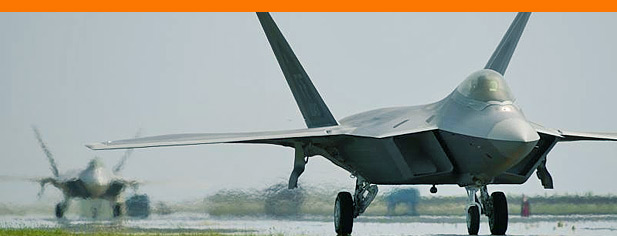
F-22 Raptors to be deployed abroad for the first time

The U.S. Air Force plans to send its most advanced jet fighter, the F-22 Raptor, abroad for the first time when it deploys 12 of the planes to Kadena AFB on the southern Japanese island of Okinawa this month.
Gen. Paul V. Hester, Pacific Air Forces commander, said the planes will train with Japan's air force, U.S. F-15s, and the U.S. Navy while deployed in Japan.
The planes, based at Langley Air Force Base, are expected to stay in Okinawa for a few months. More than 250 personnel will accompany them.
The U.S. military presence in the region will thus also get a serious boost and will definitely grab the attention of North Korea, which lies less than 1,000 miles from the island.
The F-22s only reached initial operational capability, which meant it became ready for operational use, in December 2005. The Air Force sent 12 of the planes to Alaska last June for joint exercise Northern Edge, but hasn't deployed them outside the United States before.
The Air Force has announced plans to base F-22 squadrons in Alaska and Hawaii, where they will replace F-15s, and in New Mexico, where they will replace F-117s.
The F-22 dominates any adversary through unmatched performance: stealth, supercruise speed, agility, precision and a complete view of the battlespace achieved with the advanced sensor suite embedded in the aircraft.
The F-22 Raptor is currently assigned to four bases across the United States:
Testing is conducted at Edwards AFB, Calif.
Tactics development is ongoing at Nellis AFB, Nev.
A full squadron of Raptors is based at Tyndall AFB, Fla., for pilot and maintainer training.
Operational F-22s of the 1st Fighter Wing are assigned to two squadrons at Langley, Va.
Future F-22 bases identified by the United States Air Force include:
Elmendorf AFB, Alaska
Holloman AFB, New Mexico
Hickam AFB, Hawaii
When the Raptors from Langley deployed to Alaska in June their performance was declared exceptional by Air Force officials who touted the ability of pilots and maintainers to fly a 97% sortie rate; successfully drop and hit 26 of 26 ground targets; and amass an impressive air-to-air kill ratio of 140-0 during the first week of the exercise. The commander of the F-22 squadron remarked this summer that the most impressive outcome of the exercise was the realization by all players of just how much of the battlespace information or situational awareness F-22s saw and could share with other forces. This increased the effectiveness and survivability of all flying with the Raptor.
Source : by Lieven Dewitte - F-16.NET -Published: January 9, 2007
(www.f-16.net/news)
(14.01.2007)
|